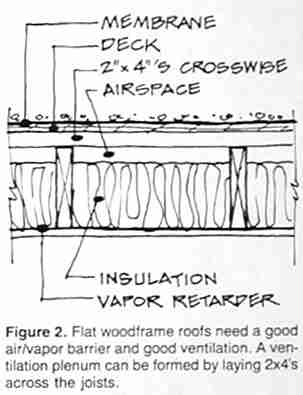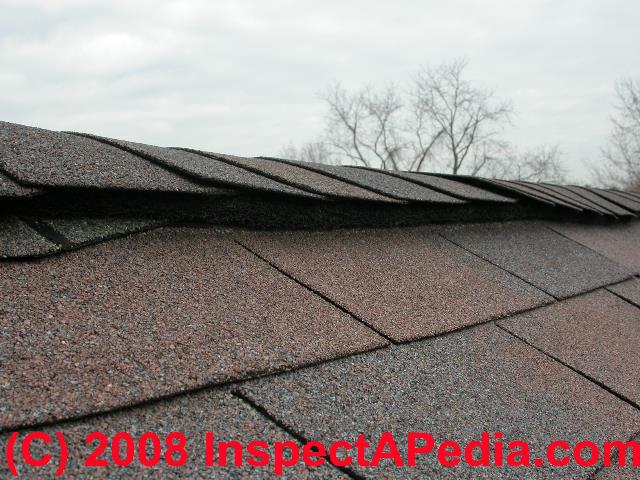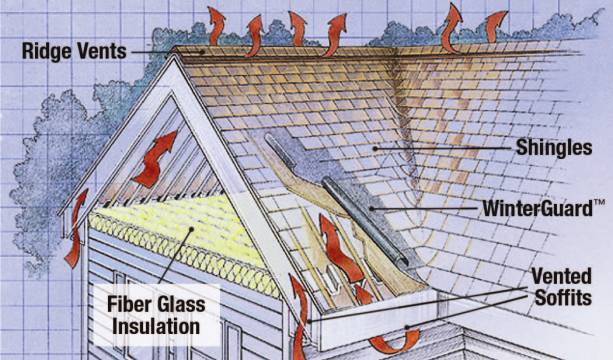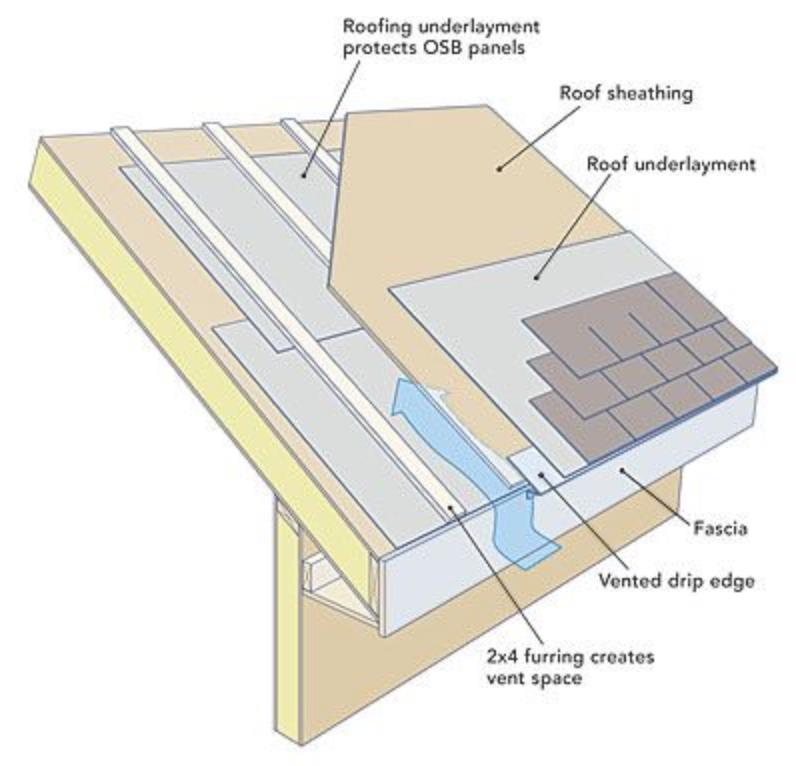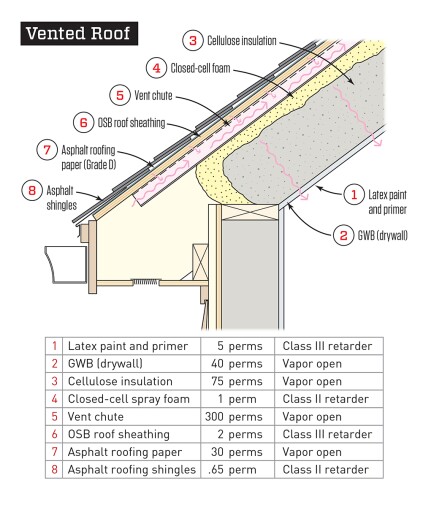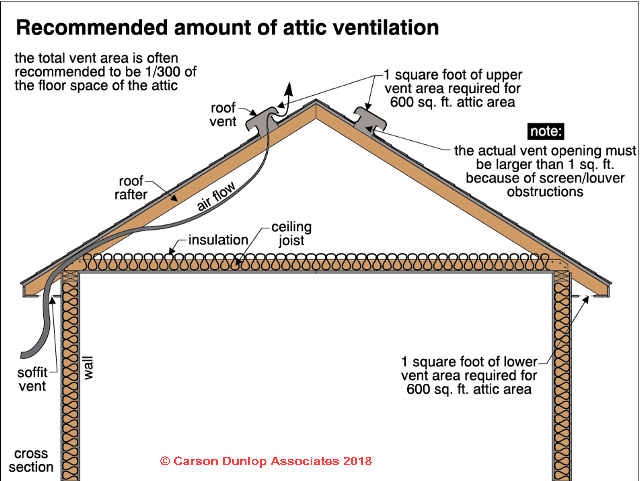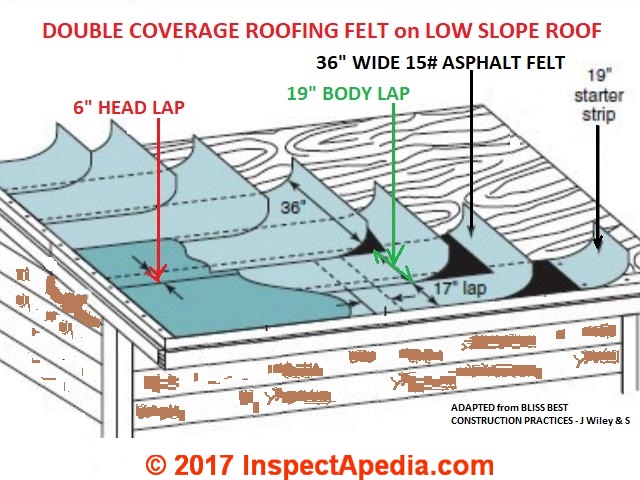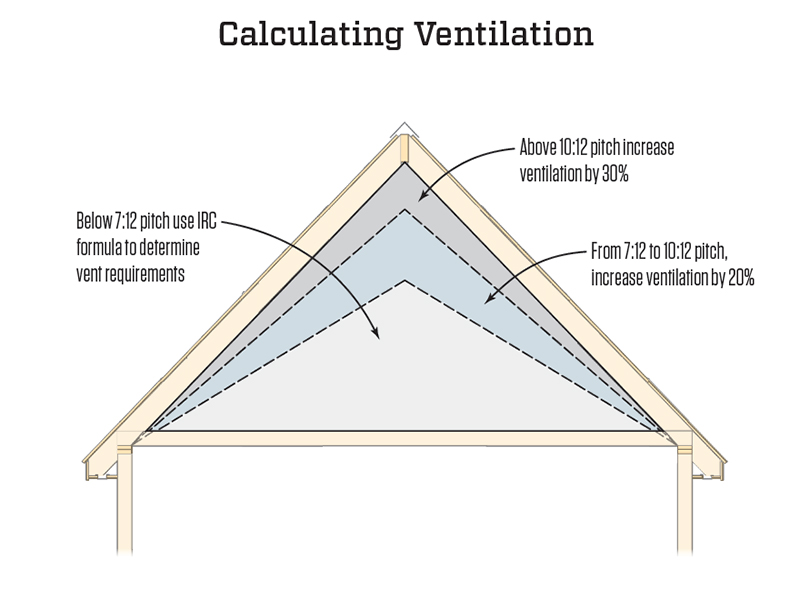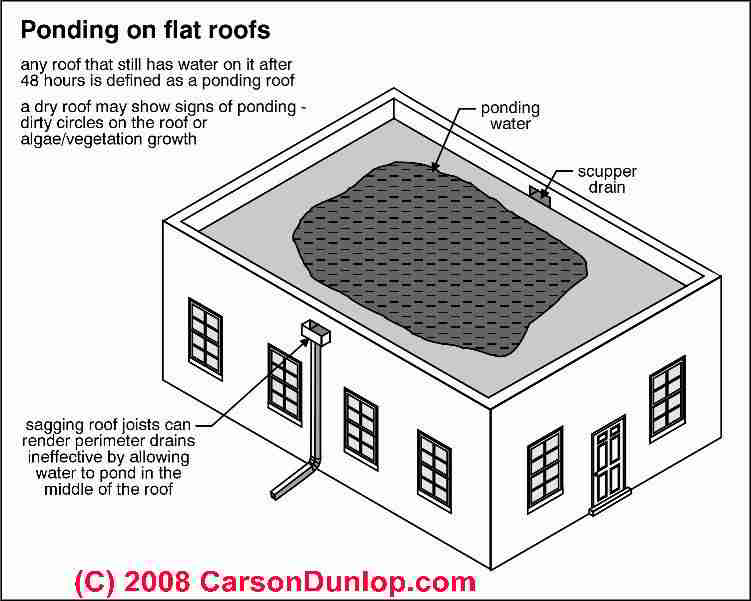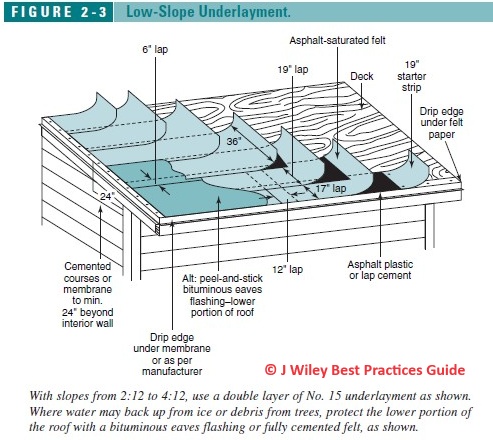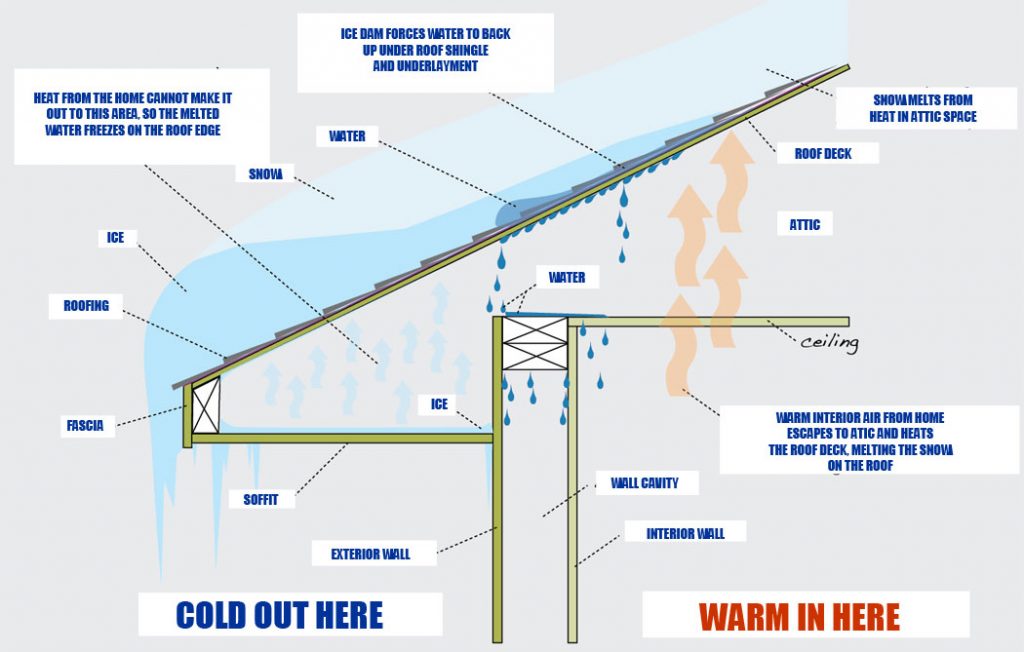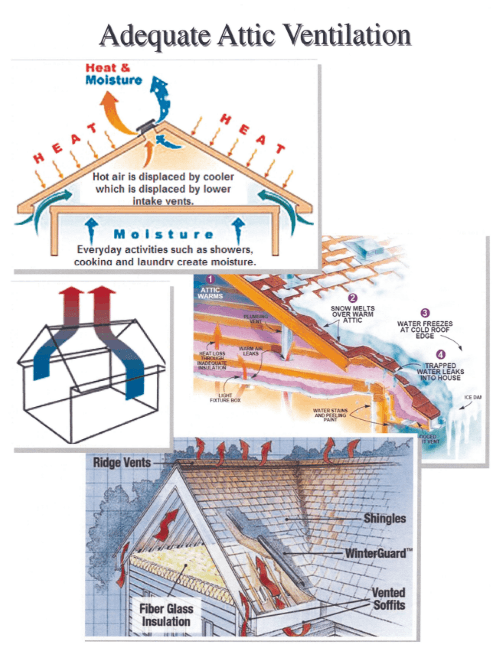These vents can be located in the soffits in gable walls in the roof surface or at several of these locations but should be distributed so as to provide effective cross ventilation.
Low slope roof ventilation problems.
Since low slope roofs are more susceptible to leaks the key to making your low slope roof to function well is to increase the waterproofing properties of your roofing system.
Flat and low slope roof designs to avoid moisture condensation problems flat roofs call up a whole new breed of building moisture problems how to avoid moisture traps under flat roofs avoid mold rot caused by moisture trapped under un vented flat roofs questions answers about the cause cure prevention of moisture problems in flat roofs and similarly hard to ventilate structures.
There is a clear answer to your question.
Unfortunately too many builders and roofers do not include any ventilation on a low slope roof as it is easier for them to avoid potential leaks.
In older buildings the usual method is to install fiberglass batts or cellulose on top of the leaky ceiling with a gap of a few inches or sometimes a few feet between the top of the insulation and the roof sheathing.
So two segments were installed overlapping by 6.
Resilient synthetic rubber membrane widely used on low slope roofing projects for over 50 years in the united states and worldwide.
I have seen ventilated flat roofs but they are usually used in conjunction with attic spaces and you mentioned finished vaulted ceilings in your post.
For flat roofs or low sloped roofs with pitches of less than 1 6 such as cathedral ceilings the total net vent area should be at least twice as large or 1.
When it comes to low slope roof systems the old adage that an ounce of prevention is worth a pound of cure truly applies.
Using v2t vents the vent secured system creates a suction effect that strengthens the entire roof and holds the membrane securely in place.
In the case of low slope roofs builders and roofers not only need to solve the ventilation problems but they also have to make sure that there are no leaks caused by the air vents.
Updated on april 8 2016.
Low slope roofs are difficult to ventilate but there are a few techniques that work.
Some of the most common low slope roof problems relate to improper installation or lack of maintenance.
There are lots of ways to insulate a low slope roof and most of them are wrong.
For ventilation channels to be effective you need a slope of at least 3 12 or steeper.
Secondly you really have two different roof types working here low slope or flat roofs and pitched roofs.
The roof is 14 4 2 meters wide but the drip edge came in 10 3 meter segments.

